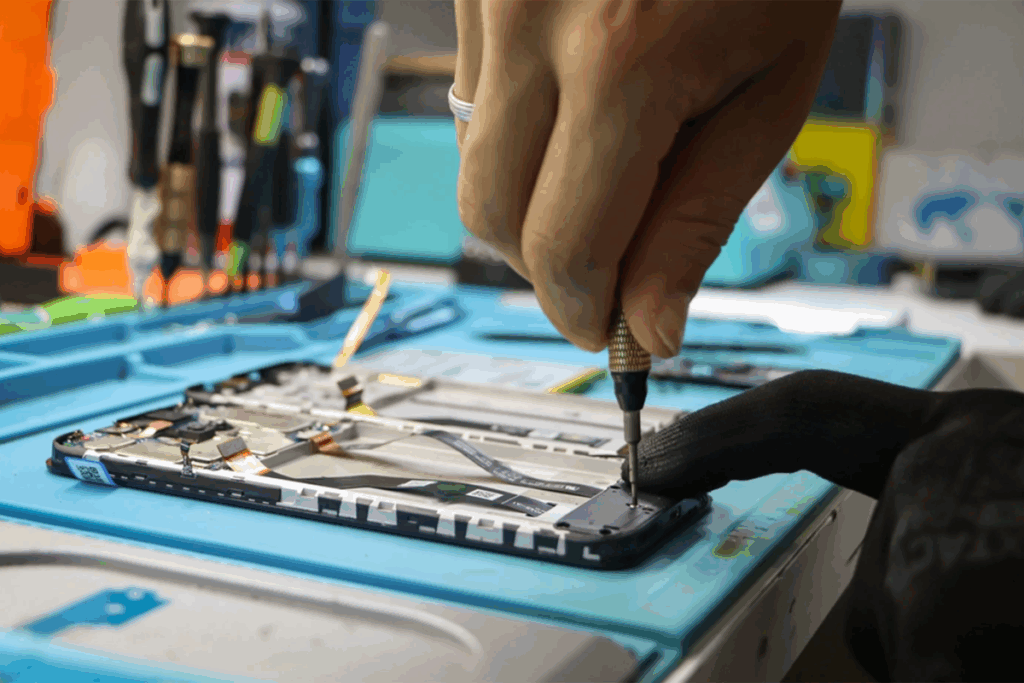You know what? Bihar is really changing, and I mean it in a good way. If you’re thinking about starting your own business here, this might just be the perfect time. The roads are getting better, more people have money in their pockets, and honestly, there’s a buzz in the air that wasn’t there a few years ago.
I’ve put together this guide to help you figure out which business might work for you. Whether you’ve got a little bit of savings or you’re ready to invest big, there’s something here for everyone. Let me walk you through some really practical business ideas in Bihar that actually work, not just fancy stuff that sounds good on paper.
Why Bihar is Actually Great for Starting a Business Right Now
Look, I’m not going to sugarcoat things. Bihar has had its struggles. But here’s what’s changed. The government is genuinely trying to help businesses grow. They’re building infrastructure that makes sense. Internet is reaching places where it never did before. And people, especially young folks, they want new things.
Think about it. Bihar has one of the youngest populations in India. These people use smartphones, they order stuff online, they want to learn, and they definitely want better food options. That’s a huge opportunity right there.
And here’s something people often forget. Bihar is still heavily agricultural. Most families are connected to farming somehow. So if you can think of a business that helps farmers or uses what they grow, you’re tapping into something real and lasting.
Business Ideas That Actually Work in Bihar
1. Makhana Processing and Packaging

Okay, this one is special because Bihar literally grows most of India’s makhana. You know those fox nuts everyone’s snacking on now? Yeah, they mostly come from places like Darbhanga and Madhubani. And the best part? The world is going crazy for healthy snacks right now.
What You’ll Actually Do: You buy raw makhana from farmers, clean it up, roast it nice and crispy, maybe add some masala or other flavors, and pack it in bags that look good. You can sell it in local shops, put it on Amazon, or even export it. Some people are making chocolate flavored makhana now. Can you believe that?
How Much Money You Need: Honestly, you can start with somewhere between 3 to 8 lakh rupees. That covers your raw material, a decent roasting machine, packaging stuff, and a small space to work. You don’t need a fancy factory right away. I’ve seen people start this from their homes and then move to bigger places once things pick up.
What You’ll Earn: If you do this right, you’re looking at getting your money back in about 12 to 18 months. The profit margin sits around 30 to 40 percent, which is pretty solid. During Diwali and other festivals, sales just shoot up because people buy these as gifts.
The Good Stuff: Bihar already grows the makhana, so you don’t have to worry about finding it. The demand for healthy snacks is exploding in cities. People in Delhi, Mumbai, even in the US are buying this stuff. And the cool thing is, when you process it, you’re adding so much value to something that otherwise sells for much less.
The Tricky Parts: You need to maintain quality because big brands are also in this game now. Makhana needs to be stored in a really dry place, or it goes bad. Getting food safety licenses takes some time and patience. Also, farmers only harvest during certain seasons, so you need to plan your stock well.
How to Actually Start: First thing, go visit the villages where they grow makhana. Talk to farmers, build relationships. They need to trust you’ll pay fair prices. Learn the roasting techniques properly – maybe visit someone already doing this or take a short course. Get your FSSAI license and GST sorted. Start with just one or two flavors. Test them in your local market. Once people start liking it, then think bigger.
2. Dairy Farming and Milk Products

Here’s a business that’s been around forever but still makes sense. People need milk every single day. And in Bihar, there’s a real preference for fresh milk from a known source rather than those tetra packs.
What You’ll Actually Do: Start with maybe 5 to 10 cows or buffaloes. Sell fresh milk every morning to nearby homes and shops. Once you get the hang of it, you can make paneer, curd, lassi, ghee. Trust me, good quality fresh paneer sells like crazy.
How Much Money You Need: To start with 5 cows, you’re looking at about 3 to 5 lakh rupees. This gets you the animals, a simple shed for them, food for a few months, and basic equipment. If you want to go bigger with 20 animals and proper processing setup, budget around 10 to 15 lakh rupees.
What You’ll Earn: The beautiful thing about dairy is you start earning within 6 months. You’re selling milk every day, so cash keeps coming in. With good care of your animals, you’ll get your full investment back in 2 to 3 years. How much you make monthly really depends on how many animals you keep and what products you add.
The Good Stuff: Daily income is a big plus. You’re never waiting months to see money. The demand for milk never drops. You can genuinely start small with just a couple of animals and grow slowly. Plus, the government has schemes that give subsidies for dairy farming.
The Tricky Parts: Animals need attention every single day. You can’t just take a week off. If they get sick, vet bills can hurt. Milk prices go up and down with seasons. You need decent space for the animals and to store their food.
How to Actually Start: Spend time with someone who already runs a dairy. Learn how they take care of animals. Decide whether you want local cows or buffaloes. Local cows give less milk but they’re easier to manage. Buffaloes give more milk but eat more. Get your shed ready before you bring animals home. Make sure water supply is sorted. Start selling to people nearby. Keep your animals clean and healthy – that’s the secret to good milk.
3. Computer Training Center

Every second youngster in Bihar needs computer skills. Whether it’s for a job or for college, everyone wants to learn. And there aren’t enough good quality training centers around.
What You’ll Actually Do: Teach basic computer stuff like MS Office, typing, internet. Add some advanced courses like Tally for accounting, graphic design, maybe even coding. You know how many government jobs need typing speed certificates? That alone brings in students.
How Much Money You Need: A small center with 10 computers needs around 2 to 4 lakh rupees. This includes the computers, tables, chairs, UPS because power cuts are real, internet connection, and rent for the first few months.
What You’ll Earn: With decent marketing and good teaching, you’ll get your money back in about 12 to 18 months. Students pay fees for 3 to 6 month courses, so you’ve got regular income coming in. Once word spreads that your students actually learn well, more will come.
The Good Stuff: The demand in small towns is huge. You get monthly fees from students, which is steady income. You can run multiple batches throughout the year. Certificate courses and special classes bring extra money.
The Tricky Parts: There’s competition, no doubt about it. You need teachers who are patient and don’t leave after a few months. Computers need maintenance and eventually upgrades. Power cuts can mess up your class schedule.
How to Actually Start: Find a place near schools or colleges, somewhere students can reach easily. Get permission from education boards so your certificates are recognized. Hire one or two teachers who genuinely care about teaching. Start with basic courses. As more students join, add advanced stuff. Put up posters in schools. Offer a free trial week so students can check out your teaching style.
4. Organic Vegetable Farming

More and more people are worried about chemicals in their food. If you can grow vegetables without pesticides and sell them to health conscious buyers, there’s real money there.
What You’ll Actually Do: Grow everyday vegetables like tomatoes, brinjal, okra, leafy greens using only natural methods. Use cow dung compost, no chemical fertilizers or pesticides. Sell directly to people who care about eating clean, to restaurants, to organic stores. Patna has a growing market for this stuff.
How Much Money You Need: One acre needs about 1 to 2 lakh rupees to get started. This covers preparing the land, buying seeds, organic manure, setting up irrigation, and basic tools. If you already own the land, you’re saving a lot right there.
What You’ll Earn: Organic vegetables sell for 40 to 60 percent more than regular ones. You can get your investment back in 8 to 12 months. And you can grow 2 to 3 crops in a year, so the money keeps coming.
The Good Stuff: Premium prices make it worth the effort. You’re doing something good for health and the environment. The market in cities is growing fast. Get proper organic certification and you can charge even more.
The Tricky Parts: Building good soil takes time. Controlling pests without chemicals needs more attention and knowledge. Finding buyers who’ll pay premium prices takes effort. The certification process is lengthy.
How to Actually Start: Learn organic farming properly. Visit agriculture universities or talk to farmers already doing this. Test your soil first. Start with vegetables that grow easily in your area. Build relationships with buyers before you harvest. Try selling at farmer markets or create a WhatsApp group of interested buyers. Keep good records so you can get certified later.
5. Tuition and Coaching Center

Education is everything to families here. Parents want their kids to do well, and they’re willing to pay for good tuition. This business can really take off if you’re a decent teacher.
What You’ll Actually Do: Teach students from class 6 to 12. Focus on subjects like Math, Science, English. Board exam students need special attention. Competition exam preparation is huge. You can teach one subject you’re really good at or get other teachers for different subjects.
How Much Money You Need: If you’re starting from home, you barely need anything. Maybe 20,000 to 50,000 rupees for a whiteboard, some chairs, and study materials. If you’re renting a place and hiring teachers, budget 1 to 2 lakh rupees.
What You’ll Earn: With 30 to 40 students paying monthly fees, you can easily make 60,000 to 1 lakh rupees per month. Your investment comes back super fast, in just 3 to 6 months if students are improving.
The Good Stuff: Demand is everywhere, in every town. Very low investment if you start from home. You can work around your own schedule. Students usually stay the whole year, so income is stable.
The Tricky Parts: Competition is intense. Your reputation depends entirely on results. You’ll be working evenings and weekends when students are free. Parents expect their kids’ marks to improve quickly.
How to Actually Start: Decide what you’re teaching. If you’re confident, start small batches at home. Make your own notes and practice tests. Focus on actually making concepts clear, not just rushing through the syllabus. When students score well, their parents become your best advertisers. Grow slowly by adding more subjects and teachers.
6. Mobile and Electronics Repair Shop

Everyone’s got a smartphone. Everyone drops it at some point. Screens crack, batteries die, charging ports stop working. If you know how to fix these, you’ll never run out of customers.
What You’ll Actually Do: Fix mobile phones – screen replacements, battery changes, software issues. Also repair laptops, tablets, other gadgets. Quick service and honest pricing is what brings people back.
How Much Money You Need: Around 1 to 2 lakh rupees should do it. This gets you tools, spare parts to start with, testing equipment, some furniture, and shop rent. Learning courses cost about 15,000 to 30,000 rupees.
What You’ll Earn: Each repair gives you 40 to 60 percent profit. Fix 5 to 10 phones a day, and you’re earning decent money. You’ll get your investment back in 8 to 12 months depending on your location.
The Good Stuff: It’s a cash business. Money comes in daily. More and more people are using smartphones. You can learn the skills in just 2 to 3 months. You can even offer home service for extra income.
The Tricky Parts: New phone models keep coming, so you’re always learning. Customers will bargain hard. You need genuine spare parts to build a good reputation. Company service centers are competition.
How to Actually Start: Learn properly from a good training center or work with an experienced technician. Practice on old phones until you’re confident. Find a shop near mobile shops or busy markets. Start with basic repairs. As you get better, take on tougher jobs. Give warranty on your work. Treat customers well.
7. Food Processing and Pickle Making

Bihar grows so many fruits and vegetables. Why let them go to waste when you can turn them into products that last and sell well?
What You’ll Actually Do: Make traditional Bihar style pickles – mango, lemon, chili, mixed vegetables. You can also make tomato sauce, jams, dried chips. Package them nicely and sell through local shops, online, at exhibitions. People living outside Bihar miss authentic Bihar taste and will definitely buy.
How Much Money You Need: Starting from home, you need about 50,000 to 1 lakh rupees for ingredients, spices, bottles, labels, and basic kitchen equipment. A proper commercial setup needs 3 to 5 lakh rupees.
What You’ll Earn: Profit margins are good, around 35 to 50 percent. Make mango pickle in season, store it, and sell all year. Investment comes back in 10 to 15 months.
The Good Stuff: Start from your own kitchen. Traditional recipes already have a market ready. Products last long if preserved properly. Festivals bring lots of sales.
The Tricky Parts: You need FSSAI license and must follow food safety rules. Taste needs to be consistent every time. Seasonal raw materials need proper storage. Big brands are competition.
How to Actually Start: Perfect your recipes first. Let family and friends taste and give feedback. Learn about food safety properly. Get FSSAI registration. Buy good quality raw materials when they’re in season. Create nice looking labels. Start selling in your neighborhood and nearby shops. Use Facebook and WhatsApp to show your products.
8. Poultry Farming for Eggs and Meat

Eggs and chicken demand just keeps growing. A well run poultry farm gives regular income once you know what you’re doing.
What You’ll Actually Do: Either start a layer farm for eggs or broiler farm for meat. Layer farms give you daily income from egg sales. Broiler farms give income after 45 days when chickens are ready to sell. Both need proper care and feeding.
How Much Money You Need: 500 layer birds need about 3 to 5 lakh rupees. This includes the birds, building a shed, feeding system, and initial feed. Broiler farming with 1000 birds costs similarly.
What You’ll Earn: Layer farms start giving returns after 5 months when birds begin laying. With good management, investment comes back in 18 to 24 months. Broilers give faster returns but you keep investing for each new batch.
The Good Stuff: Steady demand always. Government schemes offer subsidies. Start small and grow bigger. Multiple income from eggs, meat, and even the manure.
The Tricky Parts: Disease can wipe out your investment. You can’t take days off. Feed prices affect your profits. Summer and winter need climate management.
How to Actually Start: Visit working poultry farms and learn the reality. Decide between layers and broilers based on what sells in your area. Build a proper shed with good air flow. Buy healthy chicks from reliable sources. Follow the vaccination schedule strictly. Keep everything clean. Find buyers before you start so you’re not stuck with products.
9. Tea and Snack Stall

People in Bihar love their chai and snacks. A tea stall in the right spot can be surprisingly profitable.
What You’ll Actually Do: Serve fresh tea, samosas, pakoras, biscuits. Add sandwiches, maggi, cold drinks. Near offices, colleges, bus stands, or markets means customers all day.
How Much Money You Need: A basic tea stall needs just 30,000 to 50,000 rupees for utensils, gas, chairs, tables, initial stock. A small cafe with seating needs 1 to 2 lakh rupees.
What You’ll Earn: Daily sales of 2,000 to 5,000 rupees are normal in good spots. Your profit is 50 to 60 percent. Investment comes back in 4 to 8 months.
The Good Stuff: Cash comes in all day. Very little money needed to start. No special skills required. Start alone and hire help when needed.
The Tricky Parts: Long working hours every day. Hard to take days off. Competition from other stalls nearby. Profit per cup is small.
How to Actually Start: Location is everything. Find a place with people walking by and not too many tea stalls already. Get local permissions. Start with basic items. See what sells most. Keep everything spotlessly clean. Serve hot tea and fresh snacks. Be friendly. Open early, stay during rush hours. When you’re earning well, hire someone to help.
10. Driving School

So many young people want to learn driving for jobs or personal use. A good driving school with patient instructors will always find students.
What You’ll Actually Do: Teach people to drive cars, bikes, commercial vehicles. Give them both theory about traffic rules and actual driving practice. Prepare them well for the license test.
How Much Money You Need: Around 3 to 5 lakh rupees to start. This gets you training vehicles, permits, insurance, and a small office. Starting with one car and one bike reduces the initial cost.
What You’ll Earn: Each student pays 3,000 to 8,000 rupees for full training. With 40 to 60 students monthly, earnings are good. Investment returns in 12 to 18 months.
The Good Stuff: More people buying vehicles means more students. Demand throughout the year. You can hire other drivers as instructors. Extra income from license test preparation.
The Tricky Parts: Need proper license and RTO permits. Vehicle maintenance and fuel costs add up. Risk of accidents during training. Competition from established schools.
How to Actually Start: Get driving school license from RTO. Buy or lease vehicles in good condition. Hire patient drivers who actually enjoy teaching. Create a structured course. Market through pamphlets and Facebook ads. Train students well so they pass the test first time. Happy students bring more students.
Questions People Usually Ask
Which business will make me the most money in Bihar?
Look, there’s no one answer to this. It really depends on what you’re good at, how much you can invest, and where you are. Makhana processing, dairy farming, and event management can give you 30 to 40 percent profit, which is great. But businesses like tea stalls and tuition need way less money upfront and start making money faster. Pick something that fits your situation.
How much do I really need to start?
Some businesses need very little. You can start a tea stall or home based tailoring with 30,000 to 50,000 rupees. Dairy farming or flour mill needs more like 3 to 5 lakh rupees. Bigger things like event management or medical stores might need 5 to 10 lakh rupees. But here’s the thing – there are government loans and subsidies available that can help.
Do I need a bunch of licenses and permits?
Most businesses need GST registration if you’re making more than 40 lakh rupees a year. Food businesses need FSSAI license. Medical stores need drug license. Driving schools need permission from RTO. Manufacturing needs pollution clearance. Start with basics like Udyog Aadhaar and GST. Then get the specific ones for your business type.
What works in small towns?
Small towns do really well with tuition centers, medical stores, mobile repair shops, and flour mills. These are everyday needs. Computer training centers work because youngsters want to learn. Tea stalls near bus stands always have customers. Go for businesses that serve daily needs rather than fancy stuff.
Can the government help me?
Yes, actually. Bihar government has Mukhyamantri Udyami Yojana for SC, ST, and OBC entrepreneurs. There’s PMEGP scheme for manufacturing and services. Banks give loans under Mudra scheme for small businesses. Women get special benefits too. Go to your District Industries Center and ask what’s available right now.
How do I find customers when I’m just starting?
Start with people you know. Tell friends, family, neighbors. Make a Facebook page. Create a WhatsApp group. Print some simple pamphlets. If you’re running coaching or computer training, visit schools. If you’re making products, talk to local shops. Join business groups in your city. Honestly though, the best advertising is doing good work. Happy customers tell others.
Can I do online business from Bihar?
Absolutely! Online business is growing fast here. Sell products like makhana, pickles, handicrafts on Amazon, Flipkart, Meesho. Offer tutoring through online classes. Food delivery works well in cities like Patna. You need decent internet and a smartphone. Learn some basic digital marketing. Many people run both online and offline businesses together.
What are the biggest headaches I’ll face?
Getting good raw materials at fair prices can be tough in some areas. Finding skilled workers in smaller towns is hard. Power cuts are still a problem. Some businesses have heavy competition. Getting loans approved takes time and patience. But honestly, every business has problems. With planning and learning from others, you can handle these.
When’s the best time to start?
Depends on what you’re doing. Food processing should start before harvest when raw materials are available. Coaching centers should start in April-May before the new school year. Construction related stuff works better after monsoon. Wedding services peak from October to March. But businesses like medical stores, flour mills, and mobile repair can start anytime.
How long until I actually make profit?
Most businesses take 6 to 12 months to show regular profit. In the beginning, whatever you earn goes back into the business or repaying loans. Businesses with daily sales like tea stalls and medical stores give you cash faster. Manufacturing takes longer to get established. Keep enough savings to run for at least one year before expecting good profit.
My Final Thoughts for You
Bihar has real opportunities right now. I genuinely believe that. But you need to choose something that makes sense for your area and matches what you can do. Don’t just copy what works in Mumbai or Delhi. Study your local market. See what people actually need.
Start small. Seriously. Most successful business owners I know in Bihar started with very little. They made mistakes, learned, improved, and slowly grew. You don’t need to go big from day one.
Learn before you jump in. Talk to people already doing similar things. Don’t be shy to ask questions. Join local business groups. Take advantage of government programs. Knowledge saves you from expensive mistakes.
Every business will have tough days. There’ll be times when you wonder if you made the right choice. But if you work honestly, treat customers well, and keep learning, things work out. Bihar needs people like you who are willing to create something. Your business can give you financial freedom while helping your community grow.
So what are you waiting for? Pick something that excites you and take that first step. Good luck!












